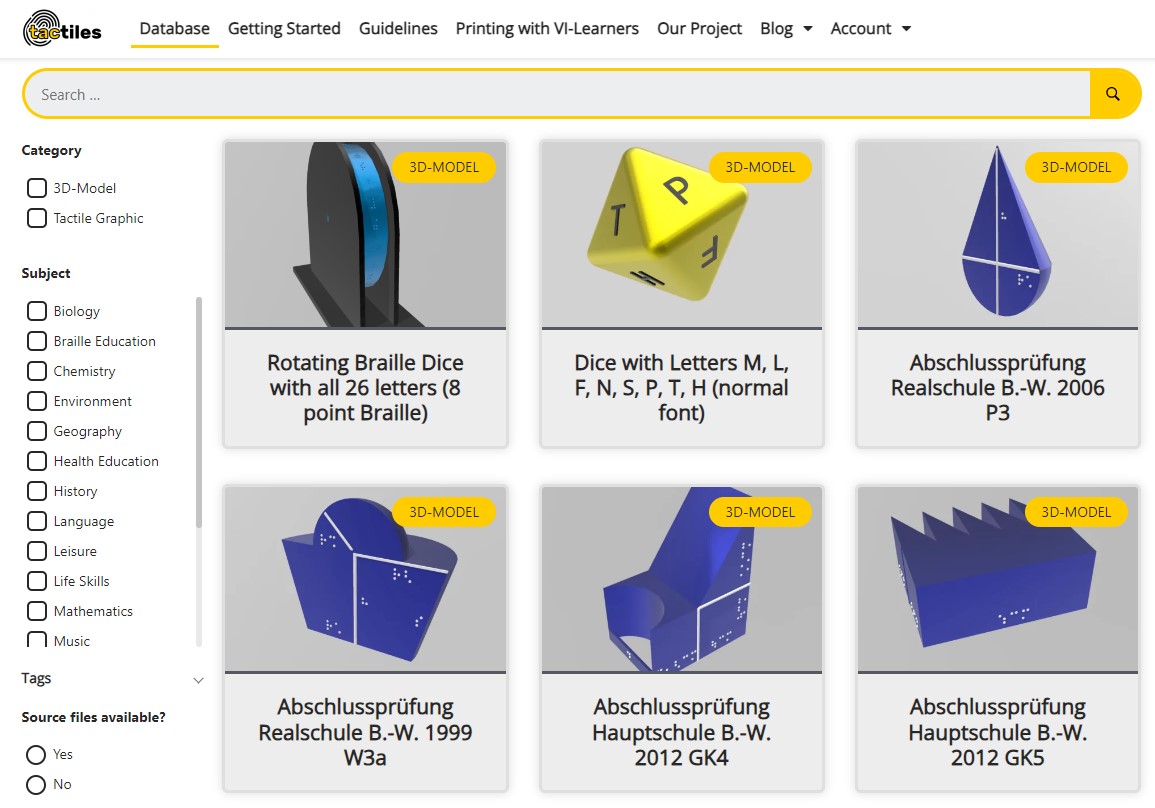Over the past few years, 3D printing h more and more popular, as it is a relatively simple and affordable technology that can be used to create a wide variety of objects. Royal Visio, expertise center for blind and visually impaired people, investigated the possibilities of 3D printing for students with a visual impairment. The company has been working together with other centers of expertise in Europe over the past three years and developed the Tactiles.eu platform. This database enables teachers to quickly, easily and inexpensively print 3D models for blind or visually impaired students to support the teaching material. In this way, the world around them becomes literally tangible
Making teaching materials tangible
Tactile information is the information we perceive through the senses of touch. It is sometimes difficult for blind and visually impaired students to form an image in their head of specific topics that will be discussed in class. Think of models from biology or mathematics, models that help students maneuver through traffic or games. With this database, teachers now have extra resources to make the teaching material tangible for blind and partially sighted students.
As part of this international collaboration, the project team designed more than 25 3D models during the project and made them freely available in the database. The initiative is widely embraced; designers from all over the world are now placing models on the platform. There are currently more than 120 models in the database.
“Never before has there been such a platform”
Evert Rasing, Innovator Education at Royal Visio, foresees that the database will be used intensively: “3D models can be found all over the internet, but never before has there been a platform with models specifically designed for education of blind and partially sighted people. pupils. That makes this database unique.”
More than just 3D models
In addition to 3D models, the platform also offers space to upload tactile drawings. Teachers can use these drawings together with the 3D models in class. For teachers and students who are not yet familiar with the possibilities of 3D printing and the use of 3D models, the platform offers a section with informative videos.
3D designs by blind and visually impaired students
Finally, the project team, of which one member is blind, investigated whether blind students could also make 3D designs themselves. The team has drawn up a list of recommendations that will help blind students to still be able to design in three dimensions.
Partnership of European expertise centers
During this project, five expertise centers in Europe collaborated: Aspaym in Spain, Blista in Germany, Schloss-Schule Ilvesheim in Germany, Sight Scotland in Scotland and Royal Visio in the Netherlands
Contact
For more information about this project and the new Tactiles.eu platform, please contact:
About Royal Visio
Everyone can go to Koninklijke Visio, an expertise centre for visually impaired and blind people, with questions about being visually impaired or blind. Visio offers information and advice, but also various forms of research, guidance, rehabilitation, education, work and housing. These services are also for people who have a mental, physical or other sensory disability in addition to a visual impairment. Those personally and professionally involved can turn to Visio for information and expertise promotion.
